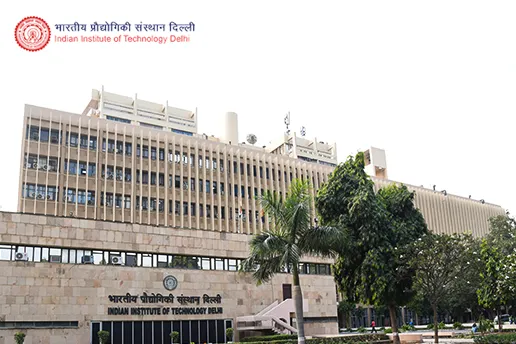Six Sigma Implementation for Operations Management is a powerful methodology employed by organisations to achieve operational excellence and streamline their processes. This approach, which originated at Motorola in the 1980s, involves measuring process performance and aiming for a state of perfection where defects are virtually eliminated.
The impact of Six Sigma has been adopted by major corporations like General Electric, Toyota, and Amazon. Also, industries spanning manufacturing, healthcare, finance, and service sectors have embraced Six Sigma to drive continuous improvement, boost customer satisfaction, and ultimately bolster their bottom line.
For those eager to excel in this dynamic field, the Executive Programme in Operations Management and Analytics offered by Continuing Education Programme (CEP), IIT Delhi, offers a comprehensive curriculum for honing the necessary skills. By participating in this programme, students gain a deep understanding of Six Sigma implementation and its applications in operations management.
What is Six Sigma in Operations Management?
Six Sigma in operations management encompasses a comprehensive array of tools and techniques dedicated to enhancing process improvement. Its core objective is to minimise variability and waste within processes while elevating the overall quality of outputs.
Through a diverse set of tools and techniques, Six Sigma enables the identification and quantification of sources of variation, facilitating the discovery and implementation of effective solutions to eliminate them. The ultimate aspiration is to attain a state of near-perfect quality across all operational processes.
The Significance of Six Sigma in Operations Management
The significance of Six Sigma in operations management becomes evident when considering the following aspects:
Data-Driven Improvement:
Six Sigma is a data-driven approach that focuses on enhancing production and operations management. It relies on analysing and leveraging data to drive continuous improvement.
Reduce Defect and Variation:
The primary goal of Six Sigma is to minimise defects and variation within production and operations processes. By identifying and addressing root causes, it strives to achieve consistency and reliability in outputs.
Statistical Analysis Tools:
By employing a variety of statistical techniques and tools, Six Sigma pinpoints and tracks the origins of errors and variation. These tools enable a systematic approach to problem-solving and process optimisation.
Waste Elimination and Efficiency:
Six Sigma emphasises waste elimination and efficiency improvement within production and operations processes. By streamlining operations and reducing non-value-added activities, it maximises productivity and resource utilisation.
Enhanced Quality and Customer Satisfaction:
When it comes to improving quality and customer satisfaction within production and operations processes, Six Sigma’s role is undeniable. By consistently delivering high-quality outputs, it aims to meet and exceed customer expectations.
Cost Reduction:
Six Sigma helps in reducing costs associated with defects and variations in production and operations processes. Rework, scrap, and other waste are minimised, which improves resource allocation and other costs.
Six Sigma Principles for Operations Improvement
The Six Sigma guidelines for enhancing operations are as follows:
Customer Focus:
Putting the requirements of the customer first by providing the appropriate goods and services on schedule will increase customer satisfaction.
Value Stream Analysis:
Identifying bottlenecks and improving efficiency by measuring cycle time, throughput, and product/service quality.
Defect Elimination:
Identifying root causes of defects and implementing corrective actions to prevent future occurrences.
Comprehensive Training:
Top-down training to ensure organisational alignment and understanding of Six Sigma principles.
Interactive Workplace Environment:
Creating a flexible and responsive ecosystem to adapt to changes, boost employee morale, and improve overall efficiency.
Short-Term Projects with Goals:
Efficiently utilising resources and holding individuals and teams accountable for achieving desired results.
Tools for Six Sigma in Operations Management
In the world of operations management, harnessing the power of Six Sigma tools is the key to achieving unparalleled levels of efficiency. Here are the prominent tools for Six Sigma in Operations Management that drive improvement:
DMAIC:
A standard Six Sigma methodology involving five phases: Define, Measure, Analyse, Improve, and Control. It aims to improve existing processes.
DFSS:
Design for Six Sigma, a methodology for designing new processes or products to achieve Six Sigma quality levels.
Lean:
A set of tools and principles for process streamlining and waste reduction, often used alongside Six Sigma.
Six Sigma Calculators:
Online tools for project planning and data analysis in Six Sigma.
Among these tools, DMAIC remains the most widely used and comprehensive. It consists of five phases:
- Define: Establishing goals, understanding customer needs, and defining the problem.
- Measure: Collecting and analysing data to identify trends and patterns.
- Analyse: Determining the root cause of the problem and identifying potential solutions.
- Improve: Implementing and testing solutions.
- Control: Monitoring the process and making adjustments to sustain improvements.
Six Sigma Implementation in Operations Management
Implementing a Six Sigma initiative in operations management can involve the following steps:
Problem or Opportunity Definition:
Clearly defining the specific problem or opportunity that the Six Sigma initiative aims to address.
Initiative Planning:
Developing a comprehensive plan that outlines the goals, objectives, and timeline for the initiative.
Six Sigma Team Formation:
Assigning a dedicated Six Sigma team responsible for leading and executing the initiative.
Team Training:
Providing necessary training to the team members on the principles, methodologies, and tools of Six Sigma.
Project Execution:
Carrying out a Six Sigma project to tackle the identified problem or capitalise on the identified opportunity.
Results Evaluation:
Evaluating the outcomes and impact of the Six Sigma project, analysing the effectiveness of the implemented changes.
Adaptation and Iteration:
Making adjustments and modifications to the initiative based on the evaluation results and feedback received.
Institutionalisation:
Embedding the implemented changes into the organisation’s processes and systems to ensure success and continuous improvement.
Thus, the Six Sigma methodology has established itself as a widely recognised and effective approach for process improvement across various industries. Its reputation stems from its demonstrated ability to enhance process quality and efficiency.
Students seeking to gain a comprehensive understanding of Six Sigma for operations management can consider enrolling in the IIT Delhi Executive Programme in Operations Management and Analytics through Jaro Education. With its adaptable nature, Six Sigma can be applied to diverse operations and business processes, yielding substantial improvements in quality and productivity when implemented with precision.






